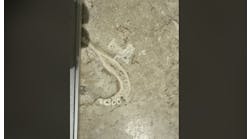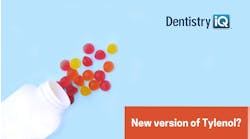Using automated systems in your dental practice will save your practice money, and the Council for Affordable Quality Healthcare (CAQH) has the statistics to prove it. For the last eight years the organization has been tracking automated transactions in dental and medical offices, and if your practice is not on board, maybe the 2020 CAQH Index will make a believer out of you.
What is the CAQH Index?
The CAQH Index tracks automation, spending, and savings opportunities for administrative transactions related to verifying patient insurance coverage and cost sharing, obtaining authorization for care, submitting claims and supplemental information, and sending and receiving payments. The report categorizes transactions by whether they are fully automated, partially electronic, or manual. The 2020 Index collected data from health plans and providers through the 2019 calendar year and thus excludes the impact of COVID-19 on health-care administrative transactions.
CAQH began conducting the Index eight years ago to track the industry’s progress toward electronic adoption of health-care administrative transactions. The CAQH Index provides the health-care industry with a roadmap to increase automation, streamline processes and reduce the cost and time associated with conducting HIPAA-mandated and other administrative transactions. Data was initially reported for the medical industry; the dental industry was added in 2016.
“This study is made possible with voluntary data submissions from dental payers and plans,” said April Todd, senior vice president of CORE and explorations at CAQH. “To enhance the accuracy and usefulness of the Index, we are continually seeking to expand participation, particularly from dental providers.” To participate in the 2021 CAQH Index, email [email protected].
“Stakeholders across health care are concerned about administrative complexity and costs, so we strongly believe we have a responsibility to share this information widely with plans, providers, and policymakers,” Todd continued. “We do this by issuing this annual report in the first quarter of the year. The report is available on the CAQH website and a webinar is conducted shortly after its release to further explore the findings. Each organization that submits data to the Index receives an individual benchmark report that compares their data to that of the industry for the reported transactions.
“The results of the 2020 CAQH Index are encouraging,” she said. “The data shows that the opportunity to build on past progress and achieve additional savings that payers and providers can invest in patient care, innovation, and expanding access in communities across the country is significant.” Read the full 2020 CAQH Index here.
2020 CAQH Index statistics prove the value of automation in dentistry
“The 2020 CAQH Index revealed that dental and medical plans and providers have saved $122 billion annually through automation, up $20 billion from last year,” said Todd. “However, an additional $16.3 billion can be saved in health care by increasing adoption of fully electronic processes, with $3 billion of those savings attributed to the dental industry.”
Yet, 87% of dental claim payments are still managed manually. By automating processes, the dental industry can save $472 million each year, according to the report, and that number includes the direct savings for your dental practice.
“For example, a manual eligibility and benefit verification costs the dental industry $8.75 more than an automated one,” Todd said. “Of that, $5.78 could be saved by dental providers. When you consider the thousands of times these transactions occur every day, the savings potential is substantial. Also, when dental practices transition their manual and partially electronic workflows to fully automated processes, they alleviate burdens for dental providers and staff, reduce costs, and have more time for patient care.”
While the industry has avoided $122 billion annually by automating these transactions, the Index pinpointed opportunities for additional savings. For example, each fully automated claims status inquiry costs $10.92 less than the same transaction conducted manually for the dental industry, and $11.71 less for the medical industry. Similarly, every eligibility and benefit verification converted from manual to electronic saves the dental industry $8.75 and the medical industry $8.64.
The 2020 Index also revealed that the costs associated with some manual and partially electronic portal transactions are increasing. This may be because, as health-care business needs become more complex, manual processes to accommodate them become more labor intensive and expensive. Today, these complex transactions take place outside of the standard transaction process, underscoring the need to upgrade to a simpler automated system.
Using CAQH research to improve your practice
Todd believes the dental industry can use CAQH findings to help prioritize resources and initiatives as they relate to administrative simplification. The findings highlight time to conduct, spend, and the costs associated with specific transactions, which allows the industry to understand the impact of moving from manual and partially electronic transactions to fully electronic transactions.
“Although the dental industry has made great progress adopting automated administrative transactions, it lags behind the medical industry in key areas, and there are opportunities for improvement,” Todd said. “For example, a manual eligibility and benefit verification costs the dental industry $8.75 more than an automated one. Of that, $5.78 could be saved by dental providers. When you consider the thousands of times these transactions occur every day, the savings potential is substantial.”
Armed with this newfound knowledge, what’s holding you back? Take a closer look at the 2020 CAQH Index and make plans to automate your practice now.





